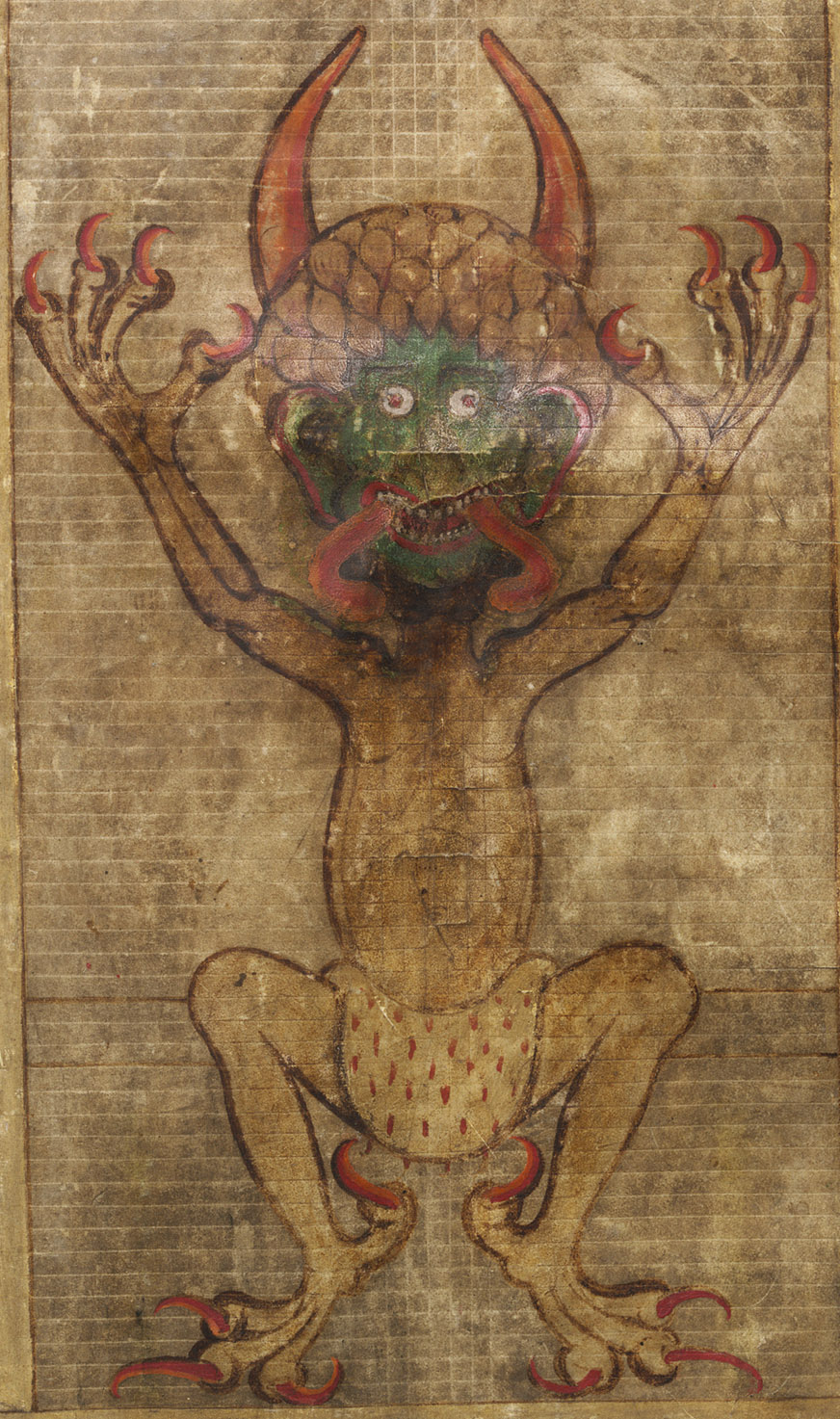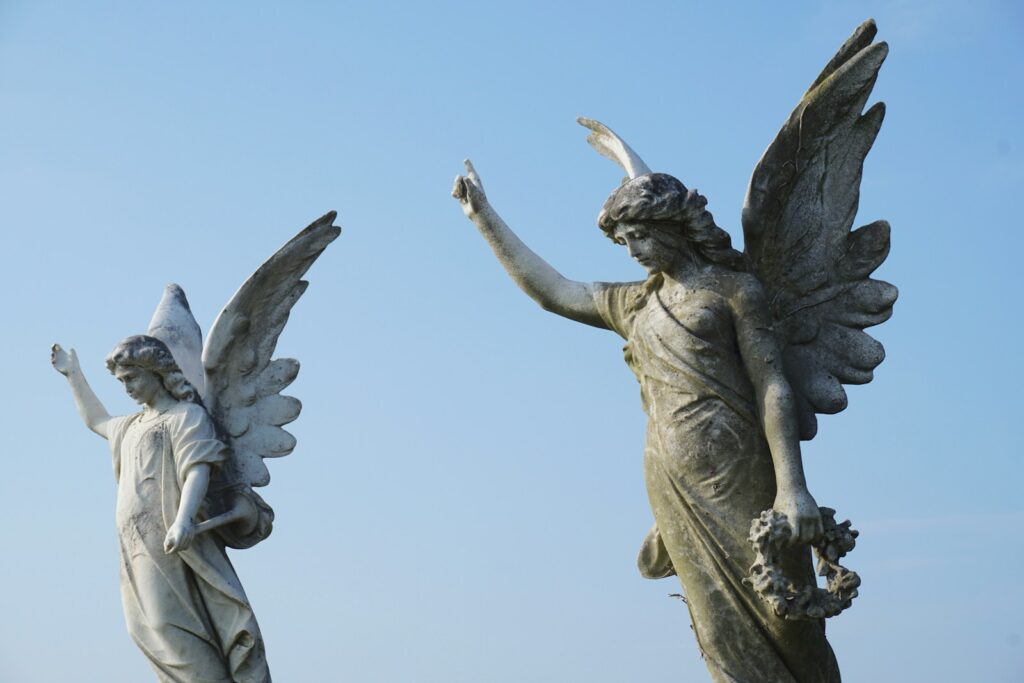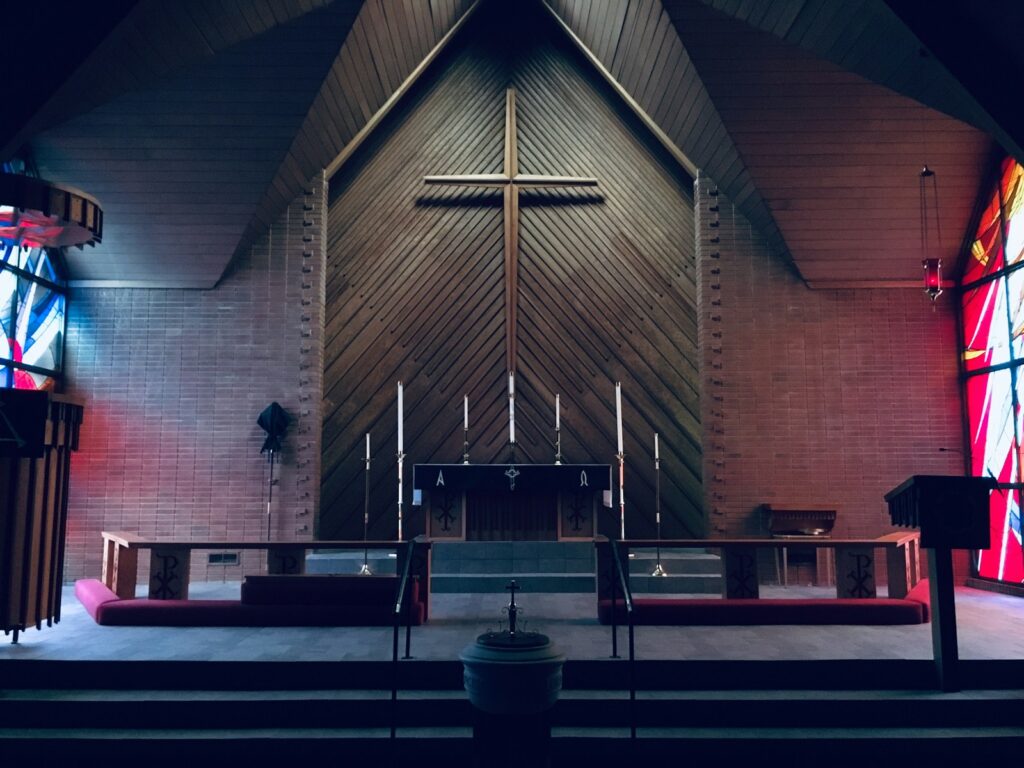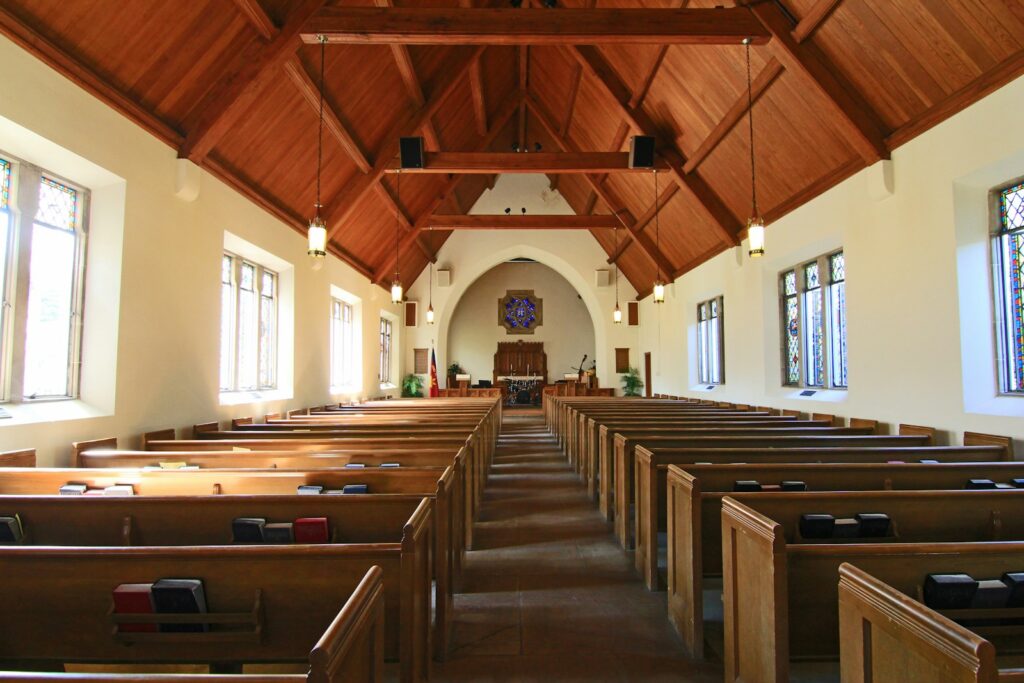
The term “Satanic” often evokes a range of images, frequently enveloped in mystery, fear, and misinformation. However, a closer examination reveals a rich and complex history shaped by evolving religious ideas, societal anxieties, and influential literature.
From covert accusations in the Middle Ages to the heightened moral panics of recent decades, the concept of Satanism has undergone significant transformation. It is not only a matter of individual beliefs but also, importantly, of the accusations directed at others. This in-depth exploration seeks to illuminate this frequently misunderstood subject by tracing its surprising origins and charting how its significance has evolved over time.
This analysis will navigate through a broad spectrum of influences—from ancient adversarial figures and literary dissenters to contemporary movements—uncovering the enduring symbols and narratives that have captivated, unsettled, and inspired countless generations.

Defining Satanism: Beyond Simplistic Notions of Devil Worship
The term “Satanism” often evokes images of secretive cults venerating a horned devil figure. However, the reality is far more complex and nuanced. At its core, Satanism encompasses a range of religious, ideological, and philosophical beliefs centered on Satan, particularly focusing on his worship or symbolic veneration.
Satanism is not a uniform belief system. Due to its historical connection to the Abrahamic conception of Satan, it is frequently regarded as a countercultural Abrahamic religion. Some adherents literally worship Satan as a supernatural deity and patriarchal figure. Others, such as the atheistic Church of Satan founded by Anton LaVey in 1966, interpret Satan as a symbol representing human traits and individualism, viewing him as a powerful metaphor without literal existence.
This diversity means that self-identified Satanism is largely a modern development, primarily linked to the founding of the Church of Satan. The term covers a broad spectrum, ranging from intentional religious devotion to the use of Satanic imagery as a prominent cultural symbol. Thus, the concept extends well beyond simplistic labels of “devil worship.”

The Origin of the Adversary: From a Common Noun to the Embodiment of Evil
The term “Satan” originally held a far more modest meaning than the ultimate antagonist it is often perceived as today. It was not initially a proper name but rather a Hebrew common noun signifying “adversary” or “one who opposes.”
This usage is evident in the Old Testament, where David is referred to as the “satan” or adversary of the Philistines, and in the Book of Numbers, an angel is sent by Jehovah to “satan,” meaning to oppose, Balaam. Here, the term described a role or function rather than a specific entity. This linguistic evolution from a common noun to the personification of evil represents a significant cultural and theological transformation.
Before the New Testament era, Jewish thought began to conceptualize “Satan” as the name of a rebellious angel cast out of Heaven by Jehovah. This portrayal further developed in the New Testament, where Satan emerges as a figure who actively tempts humanity to sin, including the temptation of Jesus. This marked a pivotal shift, transforming the generic adversary into a distinct and powerful entity within Christian theology.

The Evolution of ‘Devil Worship’: Medieval Accusations and the Demonization of Heresy
As Christianity expanded across Europe, it frequently encountered diverse belief systems labeled as ‘pagan.’ Operating under the principle of monotheism, Christian theologians concluded that these pagan deities were, in fact, demons. Initially, pagans were not perceived as intentional devil-worshippers but rather as misguided individuals unaware of the ‘true’ God.
The situation became considerably more severe regarding Christian groups branded as heretics by the Roman Catholic Church. These dissenters faced intense suspicion, with accusations that they deliberately worshipped the Devil. The charges leveled against them were alarming and often included incestuous orgies, infanticide, and cannibalism—ironically, the same allegations previously directed at Christians during the Roman Empire. In Christian iconography, the Devil and demons began to adopt physical characteristics from classical mythology, such as those of Pan and satyrs.
The earliest documented instance of such accusations in Western Christianity occurred in Toulouse in 1022, when two clerics were charged with demon worship. Throughout the Middle Ages, these accusations extended widely to various heretical groups, including the Cathars and the Knights Templar. The latter were even accused of venerating an idol named Baphomet, with Lucifer depicted as a cat. These allegations served as a potent instrument for suppressing dissent and consolidating ecclesiastical authority.

The Witch Trials: A Dark Epoch of Persecution and Fear of Satanism
During the early modern period, fears surrounding Satanism reached an unprecedented intensity, culminating in the notorious witch trials. Between the 15th and 18th centuries, tens of thousands of individuals—estimated between 30,000 and 50,000—were executed across Europe and the North American colonies of Britain. This widespread phenomenon was characterized by pervasive terror and hysteria rather than isolated incidents.
The accusations initially directed at medieval heretics, including charges of devil worship, merged with the prevalent notion of the ‘witch’—an individual believed to practice harmful magic. Intellectual and religious elites played a significant role in shaping the narrative of a vast conspiracy involving Satanic witches. This narrative incorporated folkloric elements such as night witches and wild hunts, further intensifying the climate of fear. Legal authorities in both Catholic and Protestant regions conducted these trials, underscoring the broad reach of this panic.
Contemporary historians largely agree that most accused individuals were innocent of any association with Satanic practices. Scholar Darren Eldridge observes that evidence supporting the existence of an actual cult of devil worshippers has not withstood critical examination of trial records. While some accused may have engaged in practices regarded as malevolent magic, the notion of a widespread Satanic conspiracy was predominantly a fabrication, driven by societal fears and manipulated beliefs. This period remains one of the darkest chapters in human history.

The Enlightenment’s Impact on Satan: From Supernatural Threat to Psychological Concept
At the height of witch-hunting hysteria, a profound intellectual transformation began to take root in Europe. The Enlightenment and the Scientific Revolution introduced new frameworks of knowledge, represented by thinkers such as Isaac Newton and John Locke, whose ideas increasingly marginalized the role of supernatural entities in human affairs. Reason and empirical observation began to challenge longstanding beliefs about the Devil’s direct influence in the world.
This intellectual shift deepened in the nineteenth century with the emergence of Charles Darwin’s theory of evolution. His work critically undermined traditional religious narratives, including the Fall of Man and the serpent’s symbolic role in the Garden of Eden. Darwin proposed that human evil might be better understood as a vestige of evolutionary inheritance rather than the result of demonic temptation. This marked a turning point in how evil was conceptualized—less as an external force and more as an inherent aspect of human nature.
The Industrial Revolution and the rapid expansion of urban environments further disrupted traditional rural communities and the folk beliefs that had long sustained literal interpretations of the Devil. Simultaneously, advances in psychology and medicine began to replace supernatural explanations for behavior previously attributed to demonic possession. Although belief in Satan did not disappear entirely, the Enlightenment catalyzed a significant transformation, recasting evil as a symbolic, psychological, or sociological phenomenon rather than a supernatural presence.

Romantic Rebellion: How Satan Became a Symbol in Enlightenment and Literary Thought
As traditional theological conceptions of Satan began to diminish, a striking transformation occurred in the realm of literature and art. From the late seventeenth century through the nineteenth, Satan evolved from a feared religious figure into a complex and often sympathetic character. While Christian theology increasingly marginalized him and folklore tended to portray him as a figure of ridicule, Enlightenment ideals such as individualism and reason opened new interpretive possibilities.
A pivotal moment in this reimagining was John Milton’s Paradise Lost (1667). Although Milton, a committed Puritan, did not intend to portray Satan favorably, his depiction of the character as a defiant and articulate rebel resonated with readers influenced by Enlightenment values. Satan’s resistance to divine authority was reinterpreted as a metaphor for the struggle against tyranny, catalyzing a profound shift in how the figure was perceived in secular and philosophical contexts.
This reinterpretation gave rise to what is often referred to as “literary Satanism” or “romantic Satanism” in the nineteenth century. Writers, poets, and dramatists of the period frequently used the figure of Satan to critique authoritarian structures, both political and religious. In these works, God was sometimes cast as an oppressive force, while Satan appeared as a courageous advocate of human freedom and autonomy. Rather than expressions of theological belief, these portrayals symbolized broader ideals—liberty, critical thought, and resistance to institutional power.
Such literary reimaginings marked a dramatic departure from doctrinal narratives, recasting Satan not as the embodiment of evil, but as a provocative emblem of defiance and liberation.

Revolutionary Reinterpretations: Satan as a Symbol of Political Dissent
The Enlightenment not only reshaped Satan’s literary image but also fueled radical political thought. During the American Revolution (1775–1783) and the French Revolution (1789–1799), concepts of liberty, equality, and the rejection of hierarchical power gained momentum. Within this ideological climate, the figure of Satan emerged as a compelling emblem for progressive political movements, particularly among leftist thinkers. He was no longer merely a theological antagonist but rather a rebellious figure who defied authoritarianism, symbolizing resistance against oppression.
For political radicals of the 18th and 19th centuries, Satan represented a powerful metaphor for personal and societal emancipation. He embodied the ideals of self-determination and defiance in an age increasingly defined by the pursuit of freedom and individual rights.
This reinterpretation appeared prominently in the writings of key figures. French anarchist Pierre-Joseph Proudhon, a vocal critic of Christianity, embraced Satan as a symbol of liberty in his philosophical work. Russian anarchist Mikhail Bakunin echoed this sentiment, describing Satan as “the eternal rebel, the first freethinker, and the emancipator of worlds” in God and the State. In the United States, feminist and anarchist Moses Harman provocatively titled his periodical Lucifer the Lightbearer, using the name to challenge religious orthodoxy and advocate for social reform.
While the image of the “Leftist Satan” offered a striking symbol during this revolutionary period, its prominence in political discourse diminished over the course of the 20th century.

The Occult Reinterpretation of Lucifer: From Christian Evil to Symbol of Rebellion
Beyond political interpretations, the figure of Lucifer assumed a renewed significance within occult traditions, diverging considerably from the traditional Christian portrayal of an irredeemably evil being. Historical accounts from 17th-century Sweden reveal that some outlaws living in forests claimed to venerate Satan, believing he provided more tangible assistance than Jehovah. This phenomenon is an early example of what is sometimes called “folkloric Satanism.” However, it was during the 19th century that a more organized occult reinterpretation of Lucifer began to emerge.
A pivotal figure in this transformation was the French ceremonial magician Éliphas Lévi (1810–1875). Lévi reimagined the traditional figure of evil, portraying Lucifer as a courageous rebel against tyranny. He was part of the so-called “Romantic Satanist” literary movement, which did not engage in literal worship of Satan but sought to critically challenge the Christian depiction of the “Lord of Darkness” as ultimately doomed to fail.
In this revised narrative, Lucifer was cast as an adversary to divine authority, yet not an enemy of humanity’s frailty. Instead, he became a figure with whom humans could empathize. Lévi notably employed the name “Lucifer” to represent a morally neutral aspect of “the absolute,” even as he leaned toward political conservatism in his later years. This conception of Lucifer as a catalyst for human awakening was also embraced by the early Theosophical Society, reinforcing this radical reimagining within occult philosophy.
The Evolution of Satanism Accusations: From 18th Century Hoaxes to Modern Moral Panics
Although the Enlightenment pushed literal belief in the Devil to the periphery, accusations of Satanism persisted, evolving into new forms often driven by sensationalism and fabrications. The 18th century witnessed the rise of the secretive British Hellfire Clubs, first reported in the 1720s. Despite scarce and exaggerated details, contemporary accounts depicted these gatherings as mocking Christianity and making toasts to the Devil, representing a form of “playful Satanism” aimed at defying conventional morality rather than genuine worship.
The French Revolution of 1789 prompted some Catholic writers to blame a conspiratorial group of Satanists for the upheaval. Figures such as Jean-Baptiste Fiard claimed that Jacobins and tarot card readers alike were part of a vast Satanic conspiracy. Alexis-Vincent-Charles Berbiguier expanded on these notions, alleging Satanists had supernatural abilities including shapeshifting. Although his contemporaries regarded him as mentally ill, his theories found support among certain occult circles.
One of the most infamous cases of fabricated Satanic fears was the Taxil hoax in 1890s France. Anti-clerical writer Léo Taxil publicly converted to Catholicism, then concocted elaborate stories alleging Satanic rituals among Freemasons. He later admitted the entire narrative was a deliberate fiction maintained for amusement and profit. Concurrently, Joris-Karl Huysmans’s novel Là-bas (1891) reinforced the frightening image of the “black mass” with vivid depictions, influencing public perceptions of Satanic rites.
The 20th century continued this pattern of sensational claims. British novelist Dennis Wheatley authored influential fiction portraying battles against Satanic cults. Non-fiction writers such as Montague Summers and Rollo Ahmed asserted ongoing Satanic black magic practices despite a lack of evidence. The British tabloid press amplified these narratives in the 1950s, primarily based on the accounts of one woman, Sarah Jackson. Christian authors in the 1970s, including Doreen Irvine and Mike Warnke, published stories of former Satanic group members involved in sex rituals and animal sacrifices who later converted to Christianity. Historian Gareth Medway critiques these accounts as “a series of inventions by insecure people and hack writers,” each exaggerating the previous. Even Karl Marx was accused without basis of Satanism in a 1970s book by Richard Wurmbrand. Despite their dubious origins, these narratives profoundly shaped public fears of Satanism and laid the groundwork for later moral panics.

The Late 20th Century Satanic Panic: Unraveling a Moral Hysteria
The accumulation of centuries of accusations, fear, and misinformation culminated in an unprecedented moral panic in the late 20th century known as the “Satanic Panic.” This phenomenon, primarily rooted in the United States and Canada and later spreading to the United Kingdom and Australia, emerged from alarming allegations of a Satan-worshipping cult involved in sexual abuse, murder, and cannibalism, often targeting children. Initially, those accused were labeled “witches,” but “Satanist” soon became the preferred term, and the entire episode was widely referred to as the “Satanism Scare.”
Proponents of the panic asserted the existence of a vast, organized network of Satanists occupying influential positions across society, including law enforcement and politics, capable of concealing their horrific crimes. Sociologist of religion Massimo Introvigne characterized this scare, which began around 1980 and gradually subsided by the mid-1990s, as “unprecedented in history” and exceeding the impact of earlier episodes such as Taxil’s propaganda. It rivaled even the most intense periods of historical witch hunts.
A significant catalyst was the 1980 publication Michelle Remembers by Canadian psychiatrist Lawrence Pazder. The book recounted the purported repressed memories of his patient and wife, Michelle Smith, who alleged childhood abuse in Satanic rituals, including infant sacrifice and Satan’s manifestation. The 1983 McMartin preschool trial in California, which involved accusations of Satanic ritual abuse, became a prolonged and expensive legal battle. Though the accused were ultimately acquitted, the extensive media coverage intensified similar allegations nationwide.
A central, though flawed, belief within the panic was the idea that “children do not lie,” leading to the assumption that any child’s claim of Satanic ritual abuse was truthful. While accusations arose across various social backgrounds, fundamentalist and evangelical Christians, especially Pentecostals, played a prominent role by organizing conferences and producing media that propagated the conspiracy narrative. Law enforcement officers known as “cult cops” also contributed to spreading the panic. This phenomenon later reached the United Kingdom through visiting evangelicals and found traction among social workers, resulting in numerous accusations and trials.
By the late 1980s, increasing skepticism emerged, and many convictions related to Satanic ritual abuse were overturned. In 1990, FBI agent Ken Lanning reported investigating over 300 such cases without uncovering any evidence of Satanism or ritual abuse. Anthropologist Jean La Fontaine’s research in the UK found that while some cases involved genuine child sexual abuse, there was no proof of involvement by Satanic groups or murders. In some instances, lone offenders employed ritualistic elements to intimidate victims, but these actions were isolated and unrelated to any organized Satanic cult. By 1994, the hysteria had largely diminished in both the United States and the United Kingdom, although public belief in the phenomenon lingered. A 1994 survey by Redbook indicated that 70 percent of respondents believed in the validity of repressed memories of Satanic cult abuse, with many also convinced that law enforcement had ignored evidence.

Resurfacing Fears: QAnon and the Legacy of Satanic Conspiracy Theories
Although the height of the 20th-century Satanic Panic has diminished, its underlying fears and accusatory patterns have not disappeared; instead, they have reemerged in new forms. A prominent contemporary example is QAnon, a conspiracy theory originating in the United States around 2017. Reflecting earlier panics, QAnon put forward baseless claims of organized Satanic worship among influential figures, including Democratic politicians, Hollywood actors, government officials, and business magnates, who were accused of involvement in sexual abuse, murder, and cannibalism.
These allegations originated from an anonymous source or group known as “Q,” affiliated with a far-right political movement. The claims were widely disseminated and amplified by online communities and influential figures. Central to QAnon’s narrative was the existence of a global child sex trafficking ring, with its powerful members purportedly kidnapping, abusing, and even consuming children. The theory promised that then-President Donald Trump would ultimately expose and dismantle this cabal in a dramatic event referred to as “the storm.”
Despite the absence of credible evidence supporting these serious accusations and the failure of the predicted “storm” to occur before a new presidential administration, the QAnon conspiracy has not entirely faded. It serves as a stark reminder of how historical anxieties about concealed malevolent forces—often framed through the language of Satanic allegations—continue to evolve and persist within modern society, finding new subjects and channels for dissemination. The enduring appeal of such narratives underscores a deep human tendency to seek straightforward explanations for complex social issues, often by alienating and demonizing perceived adversaries.

Modern Satanism: Divergent Paths and the Enduring Legacy of Social ‘Othering’
Following a turbulent history marked by accusations and evolving interpretations, the contemporary landscape of Satanism presents a complex picture. The phenomenon of self-identified Satanism is relatively recent, largely stemming from the 1966 establishment of the Church of Satan by Anton LaVey in the United States. Although primarily an American movement, globalization and the Internet have accelerated the dissemination of Satanic ideas worldwide.
Emerging post-1960s, Satanic groups broadly fall into two categories: atheistic and theistic Satanism. Atheistic Satanists, typified by the Church of Satan, reject belief in a literal supernatural Satan. Instead, they view Satan as a symbol representing certain human attributes, employing the figure as a powerful metaphor without ontological substance. This perspective embraces individualism, rational thought, and often a rejection of traditional religious doctrines.
Conversely, theistic Satanists worship Satan as a supernatural entity, though they typically do not ascribe omnipotence to him, regarding him more as a patriarchal figure. This divergence underscores the heterogeneity within Satanic movements. Moreover, groups such as the Church of Satan, the Temple of Set, and The Satanic Temple frequently challenge each other’s legitimacy, illustrating internal disputes alongside external misunderstandings.
A consistent thread throughout the history of Satanism is the role of “othering.” The term “Satanism” has repeatedly been applied as a label by those opposing or disliking others. Scholars Asbjørn Dyrendal, James R. Lewis, and Jesper Aa. Petersen emphasize this point, while Eugene Gallagher notes that the term has often served polemical rather than descriptive purposes. From medieval heretics accused of devil worship to targets of the Satanic Panic, and rival Christian sects accusing each other of alliances with Satan, the concept has been employed as a tool to demonize opponents and reinforce social order. The “invention of Christianity,” grounded in Christian mythology, has been instrumental in defining and persecuting the ‘other.’ This legacy continues to influence modern conspiracy theories. Understanding this complex history is essential to unraveling the intertwined meanings of fear, rebellion, and identity embodied by the figure of Satan.




